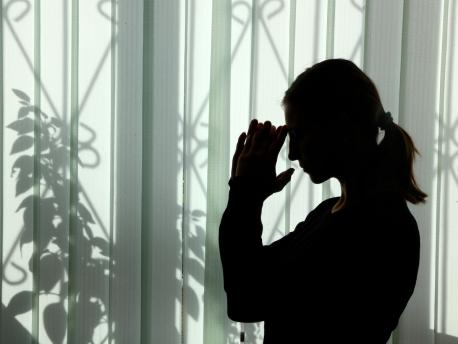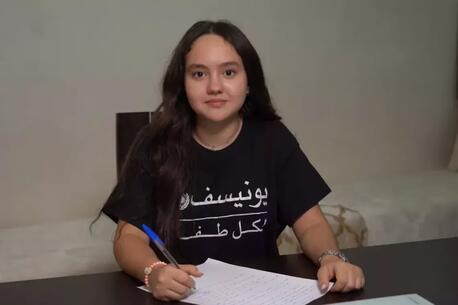
Child Trafficking Hits Close to Home
The buying and selling of children for the purpose of exploitation happens everywhere — including all 50 U.S. states. Here's how you can help end child trafficking.
Child trafficking is the buying and selling of kids under the age of 18 for the purpose of exploitation, perpetrated by force, fraud or coercion. Child trafficking happens across the globe, including all 50 U.S. states.
It is a crisis plaguing almost every nation in the world, and one that has only deepened due to COVID-19. As the U.S. State Department's 2020 Trafficking in Persons (TIP) Report points out, the instability and lack of access to critical services caused by the pandemic have made more people vulnerable to exploitation. Traffickers have capitalized on that instability, adjusting their business models to the 'new normal.' There are also fears that COVID-19 has made the task of identifying victims of human trafficking even more difficult.
Child trafficking is a global crisis — and a domestic one
It's important to understand that the majority of victims are trafficked within the borders of their own country — an estimated 58 percent in 2016, up from just 27 percent in 2010, according to the UN Office on Drugs and Crime. Recognizing that there is domestic trafficking within the United States will allow for better report rates, prevention and rehabilitation for those who have been trafficked.
Many people also believe that trafficking only involves victims who have been bought, sold and transported in illegal or underground industries. But there are more nuanced versions of trafficking that take place in service industries like restaurants and cleaning services. The misperception creates a false reality and alters the public understanding of the issue.
Another common misconception is that the majority of people being trafficked in the United States are undocumented immigrants. In reality, trafficking within the United States is happening largely to our very own citizens. According to Polaris, 1 in 7 of children reported to the National Center for Missing and Exploited Children became victims of sexual trafficking. Of this amount, 88 percent were coming out of the foster care system.
The Jeffrey Epstein case triggered a national conversation about domestic child trafficking for sexual purposes. The case was unique — not in its details, but in the amount of news coverage it received. Though trafficking stories may seldom reach the front page, unfortunately, cases of powerful individuals exploiting the vulnerable for sex are all too common. The Human Trafficking Hotline’s national statistics report showed that 66 percent of those trafficked were coerced through the methods of isolation, emotional abuse or economic abuse.
1 in 7 children reported to the National Center for Missing and Exploited Children became victims of sexual trafficking
While trauma-informed and victim-centered resources exist for those who have been harmed by child trafficking, these resources won't reach all the survivors unless the public is alerted to various forms of trafficking. Progress on this issue has been made through the Trafficking Victims Protection Act, a UNICEF USA-supported law that was first passed in Congress in 2000 and has since been reauthorized multiple times. The 2019 reauthorization put emphasis on the exploitation of the victim with no requirements regarding the victim’s movement from one place to another.
UNICEF USA’s support of this legislation is based on the conviction that all children have the right to grow up in a safe and healthy family environment, free from violence, exploitation and abuse.
All children have the right to grow up in a safe and healthy family environment, free from violence, exploitation and abuse
As we continue to move forward in our examination and prevention of human trafficking, there must be a greater awareness of all the environments and contexts in which this crime takes place. In creating a public consciousness, it is important to consider that trafficking happens not only in low-income or middle-income countries, but also among the wealthy and powerful in the United States. Considering the full scope of human trafficking will open new options for prevention, response and support.
Combatting child trafficking requires the strengthening of child protection systems and the promotion of positive social norms in all contexts — development and emergency — to prevent and respond to violence, exploitation and abuse directed at children.
Here's how you can help end child trafficking
You can be part of the solution.Take Action today in the following ways:
- Send an email to your local elected officials urging them to keep traffickers and trafficking victims top of mind
- Join UNICEF UNITE
- Become a monthly donor
- Spread the word by sharing this article or posting on your own social media accounts using the UNICEF USA Social Press Kit and the hashtag #EndTrafficking
Top photo: Promised a job as a housekeeper, this teenager was forced into sex work in Kazakhstan. She escaped and found refuge in a UNICEF-supported center for abused and trafficked children in Almaty. © UNICEF/UN045727/Pirozzi
HOW TO HELP
There are many ways to make a difference
War, famine, poverty, natural disasters — threats to the world's children keep coming. But UNICEF won't stop working to keep children healthy and safe.
UNICEF works in over 190 countries and territories — more places than any other children's organization. UNICEF has the world's largest humanitarian warehouse and, when disaster strikes, can get supplies almost anywhere within 72 hours. Constantly innovating, always advocating for a better world for children, UNICEF works to ensure that every child can grow up healthy, educated, protected and respected.
Would you like to help give all children the opportunity to reach their full potential? There are many ways to get involved.




